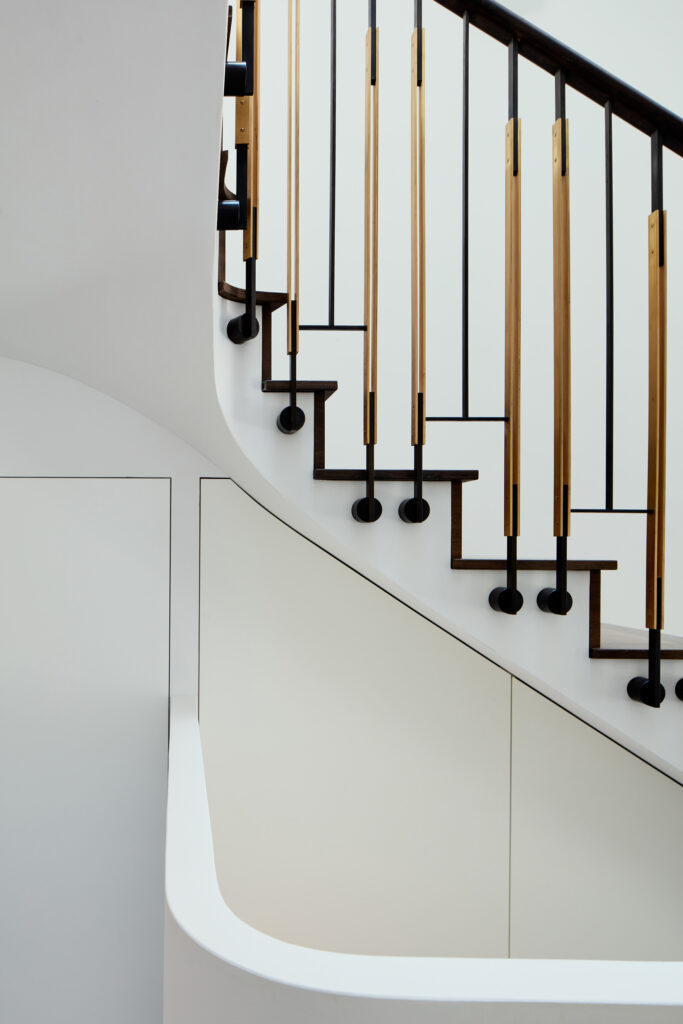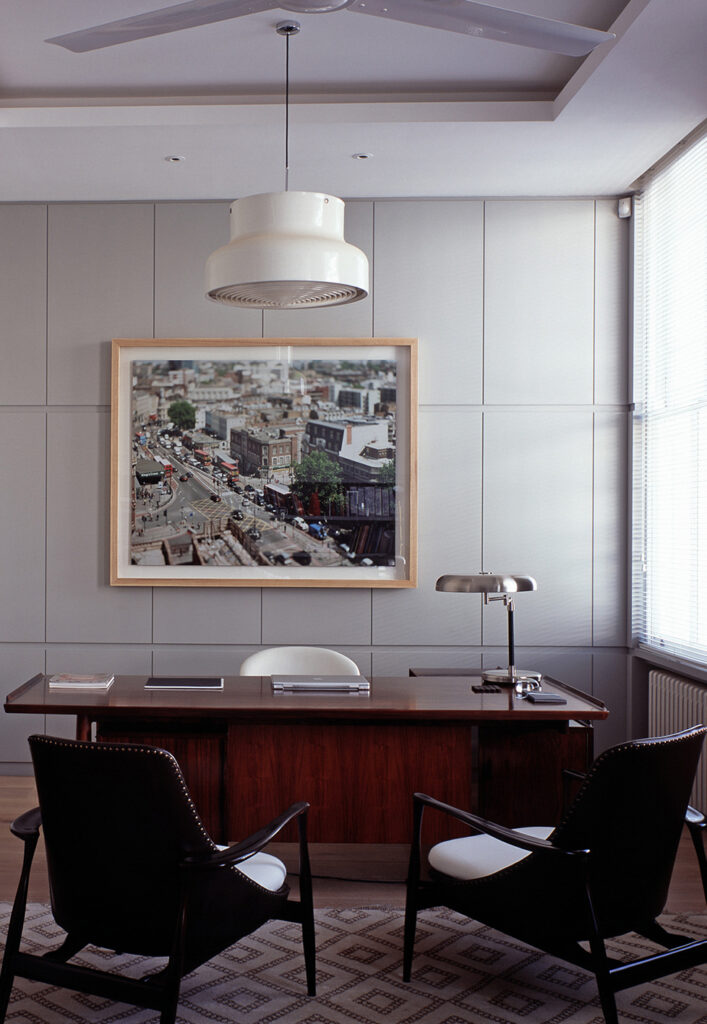How do we charge?
Like most Architects in the UK, our fees vary based on the size, type, and specifics of the project, as well as the level of service required. When clients have a clear brief and budget, fees are typically negotiated upfront. In cases where the project details are less defined, we may agree to charge by the hour during the feasibility stage until the project’s scope becomes clearer. While there are no standardised fees within the industry, like most architectural practices we have developed our own fee structures based on our operational costs.

What are the options for Architects fees?
In the UK, architects typically charge fees in one of three primary ways:
- Percentage of Construction Cost: This method involves calculating the architect’s fee as a percentage of the total construction cost. It allows for flexibility if the project scope changes and is commonly used for larger projects.
- Lump Sum: Under this approach, the architect provides a fixed fee for a clearly defined scope of work. This fee is agreed upon upfront but may need to be renegotiated if the project’s nature changes significantly.
- Time Charge / Hourly Rate: This method is based on the actual time spent on the project. It is often used when the project scope is not well defined at the outset, providing clients with a flexible “pay as you go” option. However, it offers the least fee certainty for the client.
These methods enable clients to choose a fee structure that best suits their project’s requirements and budget. In most cases, a percentage fee structure is the preferred method because it offers clients a clear estimate of total architectural costs while providing flexibility for any increase in project scope. The percentage is calculated based on the construction cost, excluding VAT and professional fees. As the project progresses, any changes in the estimated construction cost will automatically adjust the fee. This system simplifies the process of updating fees in response to changes in project size or complexity. Typically, percentage fees are paid in monthly instalments throughout each stage of the project.

We understand that some clients may have concerns about percentage-based fees, particularly the idea that higher construction costs might result in higher architectural fees. However, it’s important to clarify that architects are bound by the Architects Registration Board (ARB) Code of Conduct, which requires us to:
- Act with honesty and integrity
- Always act in the best interests of our clients
- Handle client funds and budgets responsibly
At GS Architecture, we take these responsibilities seriously and work hard to ensure that our design decisions are guided by what’s best for your project and budget.
Key points about our fees:
- Economies of scale: For larger projects with higher construction costs, our percentage fee is usually lower, reflecting efficiencies gained at scale.
- VAT: In the UK, VAT is applied to all architectural fees.
- Fair fee adjustments: Our percentage-based fees are only adjusted if the projected construction cost changes by more than 10%, ensuring minor variations won’t trigger a fee adjustment.
- Additional expenses: In addition to our fee, we charge for project-specific expenses such as printing, travel, and any third-party payments made on your behalf (e.g., planning application fees).
Regardless of the chosen fee structure, our goal is for the total architectural fee to reflect the actual time and expertise required to deliver your project. We strive for transparency, fairness, and value at every stage of the process.
Is everything included? What about additional services?
Our architectural fees for a full service are typically structured around RIBA work stages 0-7. A detailed schedule of services is provided with the fee proposal, outlining the tasks included as well as any exclusions. If our client requires additional services beyond the agreed scope, these can either be time-charged or based on a fixed fee. Architects must always obtain the client’s consent before proceeding with such additional services. Examples of optional services, may include Principal Designer services in relation the BSA, detailed joinery design (e.g., custom kitchens and wardrobes), external landscape design (covering surfaces, lighting, and boundaries), and interior design, such as furniture and specialist lighting. Depending on the requirements, these additional services may add another 1-3% on the total percentage fee.

What are some of the factors taken into consideration when establishing our fees?
We have studios in London and Amsterdam, and work on projects across a wide range of locations—within the UK, Europe, and internationally. Several key factors influence how we establish our fees, with location and project type being two of the most significant.
Location impacts fees due to regional variations in construction markets, regulatory requirements, and logistical complexity. Working in major urban centres or international contexts often involves higher fees, particularly where regulatory processes are more involved or additional travel and coordination are required.
The type and complexity of the project is equally important. Our work focuses on bespoke solutions across a diverse range of building typologies—from commercial and retail spaces to more technically demanding or highly tailored projects, such as custom residences, cultural spaces, and public venues. Simpler projects typically involve lower fees, while more complex commissions require greater time investment, detailed design development, and specialist coordination, reflected in a higher fee structure.
Ultimately, our aim is to ensure that fees are proportionate to the scope, complexity, and context of each unique project, wherever it may be located.
What are our fees for a typical residential project?
Residential projects are among the most time-intensive assignments for architects, primarily because they are deeply personal to clients and require high-quality construction along with comprehensive services. These projects tend to be relatively small, bespoke, and lack economies of scale or repetitive elements.
Within private residential work, our projects usually fall into one of three categories, each with its own fee considerations:

1. New house or extensive refurbishment
A new build house on a vacant site can offer significant potential for customisation and some flexibility in materiality and style, although local planning and conservation area requirements, will still need to be considered.
Extensions, basements, and loft conversions are typically resource-intensive projects because they involve working with existing buildings, which can add complexity.
Our typical architectural fees for a high-quality design of these projects range from approximately 14% for a £100,000 construction budget to around 12.5% for projects of £1 million or more.
These figures are indicative and can vary depending on other factors such as location and project complexity. Although VAT is typically not payable on the construction cost of a new house, it is still payable on fees for architects and all other consultants involved in the process. VAT is payable on refurbishment works as well as associated fees.

2. Listed buildings
Projects involving listed buildings are especially resource-intensive due to the complexity of working with historic structures. Obtaining listed building consent and designing alterations or restorations require the expertise of an experienced architect with specialist knowledge of historic preservation. As a result, our architects’ fees for such projects are generally higher than for standard projects.
Our architectural fees for listed building projects typically range from around 16% for a £100,000 construction budget to approximately 13% for budgets of £1 million or more.
These elevated fees reflect the additional work and expertise required for the careful handling of historic fabric and compliance with preservation regulations.

3. Sustainable retrofit
Retrofitting existing structures to meet stringent standards is more challenging than designing energy-efficient new builds. Existing buildings often come with limitations such as older construction methods, materials, and layouts that need careful consideration.
For a comprehensive sustainable retrofit, our architectural fees generally range from 16% for a smaller budget, of around £100,000, to 13% for larger projects of £1 million or more.
Achieving energy-efficient standards like Passivhaus, especially in existing buildings, requires deep expertise. It involves going beyond basic regulations, with a strong understanding of building physics, technology, and practical limitations. Experience is key to determining what improve-ments are feasible and effective in retrofits.

When a full service is not required, we can sometimes offer a reduced scope.
Architects fees to planning
Many clients choose to engage an architect solely for planning services, especially if they plan to sell a building or site after obtaining planning consent to increase its value. Typically, our fees for planning work amount to about 30% of the full architectural fee. For instance, for a residential project with a budget of £500,000 and a standard fee of 13%, the total planning fees would be approximately £19,500 plus VAT.
It’s important to note that clients have the flexibility to terminate their agreement for full architectural services at any point during the process, provided they have settled the fees for any work that has already been completed. This allows clients to manage their investment and commitment based on their evolving project needs.
Fees for plans only
The “plans only” service generally encompasses the detailed and technical design phase, along with the earlier planning application phase, culminating at the end of stage 4, which includes detailed drawings and a complete specification. If a client opts for this service, it typically does not include contract administration or on-site involvement during the construction phase. Additionally, a Construction Phase Plan (CPP) would be required at a later stage.
Typically, the fees for work focused solely on detailed plans account for around 70% of the full architectural fee. For example, for a residential project with a budget of £500,000 and a standard fee of 13%, the total fees for this plans-only service would be approximately £45,500.
Some final notes for consideration
We’d welcome the opportunity to discuss your project and explore how our design expertise can add value to your brief. That said, we understand there are many options when choosing an architect. Whatever direction you take, here are a few important points to keep in mind:
- A skilled architect can add real value to a project—often well beyond their fees—through thoughtful design, enhanced functionality, improved energy performance, and increased property value.
- Choose an architect whose experience aligns with your project. Look at past work, client testimonials, and how well they understand your goals. Just as importantly, make sure you feel comfortable working with them—this is a collaborative relationship that will last through many stages.
- Be clear about your goals and budget from the outset. This ensures realistic expectations and efficient design decisions. A detailed feasibility study can be a worthwhile early investment, helping you assess options and identify potential risks or opportunities.
- Understand the full cost picture. Architects’ fees vary depending on project size, scope, and complexity. In addition to design fees, be sure to account for other costs such as VAT, planning or consultant fees, and reimbursable expenses.
Ultimately, the right architect will not only meet your brief, but also elevate your project, delivering long-term value, quality, and impact.